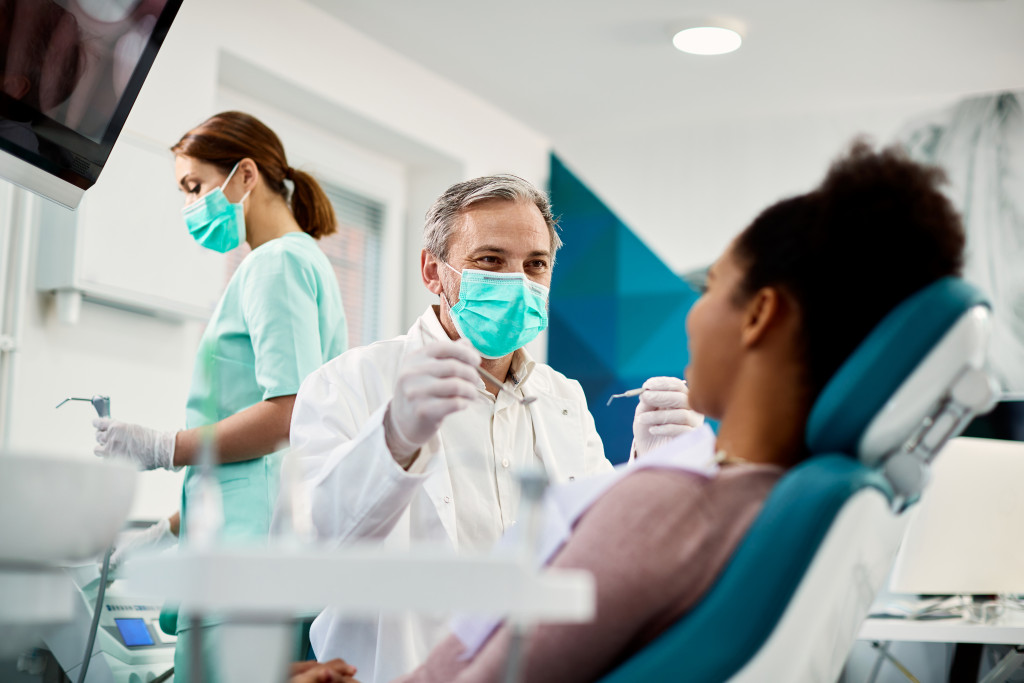Every year, new technologies and developments in the field of dentistry emerge. From changes in the way practice preventive care to advances in dental implants, it’s important to stay up-to-date on the latest trends so that you can make informed decisions about your oral healthcare. So, what can we expect to see in the world of dentistry and oral healthcare in 2023? Let’s take a look.
3D Printing in Dentistry
3D printing is already being used in a variety of industries, from manufacturing to architecture. So it’s no surprise that 3D technology is also beginning to be used in dentistry. There are a number of ways that 3D printing can be used in dentistry, from creating models of patients’ teeth for dental implants to printing custom braces.
One of the advantages of 3D printing is that it allows for greater customization and precision. This is especially important in dentistry, where small differences in teeth size and shape can make a big difference in the fit and function of dental implants or braces. 3D printing can also be used to create replicas of teeth and jaws, which can be helpful for both dental practitioners and patients. Imagine being able to create tailor-fit dental implants for your patients with less effort, or even having the ability to create dentures for patients you already have records of without requiring them to come in.
It’s still early days for 3D printing in dentistry, but it’s clear that this technology has a lot of potential for the future. In the coming years, we can expect to see even more use of 3D printing in dental care, from simple tasks like making temporary crowns to more complex procedures like creating custom-fit dental implants. So if you’re looking for a way to get ahead of the curve in dentistry, keep an eye on 3D printing!
Minimally Invasive Dentistry
Another trend that we’re seeing in dentistry is a move towards minimally invasive procedures. Thanks to advances in technology, dentists are now able to provide treatment using smaller instruments and making smaller incisions. This not only reduces trauma to the surrounding tissues, but it also speeds up healing times and results in less discomfort for patients. Minimally invasive dentistry is particularly beneficial for those who have a fear of needles or dental procedures. It’s also great for children, who often have a difficult time sitting still for long periods of time.

Laser Technology in Dentistry
Lasers are already being used in a variety of medical fields, and dentistry is no exception. Nowadays, lasers are used to remove decay within a tooth, reshape gums, remove lesions, and kill bacteria. What’s amazing about them is that they do not cause any damage to the surrounding tissues. This can be especially helpful in cases where there is limited access to the teeth or when there is a risk of damaging sensitive tissues.
So what can we expect to see in terms of laser technology in dentistry in the years to come? In the near future, it may also be used in making quick-healing incisions as well as instant teeth imaging and 3d modeling. It’s likely that we’ll see even more use of lasers for both diagnostic and treatment purposes. Lasers are an extremely versatile tool that can be used for a wide range of applications in dentistry. So if you’re looking for a way to stay ahead of the curve in your field, keep an eye on laser technology!
Teledentistry
The COVID-19 pandemic has forced doctors to shift to telemedicine as a way to provide care for patients. This is a change that will likely have a big impact on dentistry in the years to come. 90% of dental offices closed at the start of the pandemic, and this has affected the status of oral health badly. However, teledentistry can help bridge the gap between dentists and patients. This is especially beneficial for those who are unable or unwilling to leave their home due to illness or age. It’s also great for people who live in remote areas or who have difficulty getting to the doctor’s office. It is likely that with more advanced smartphone cameras and internet connectivity, dentists will soon be able to diagnose issues over video calls.
Another possibility is for a clinic to send easy-to-use equipment (such as mini cameras that hook up to mini USB and Thunderbolt ports) to aid in dental checkups. Another advantage of telemedicine is that it allows doctors to provide care to more patients. With traditional in-person visits, there are often limitations on how many patients a doctor can see in a day. But with telemedicine, doctors can see multiple patients at the same time, which helps to reduce wait times.
There are some disadvantages to telemedicine, such as the lack of personal interaction between doctor and patient. However, this is likely to improve as technology advances. In the years to come, we can expect to see even more use of telemedicine in dentistry as a way to provide care for patients who are unable or unwilling to leave their home.
Conclusion
The world of dentistry is constantly evolving—and that means there are always new trends on the horizon. From digital dental radiography to minimally invasive procedures, there are plenty of exciting developments to look forward to in 2023. So whatever your oral healthcare needs may be this year, rest assured knowing that there’s likely an innovative solution out there just waiting to be discovered.


